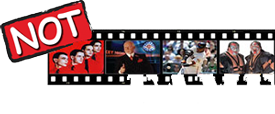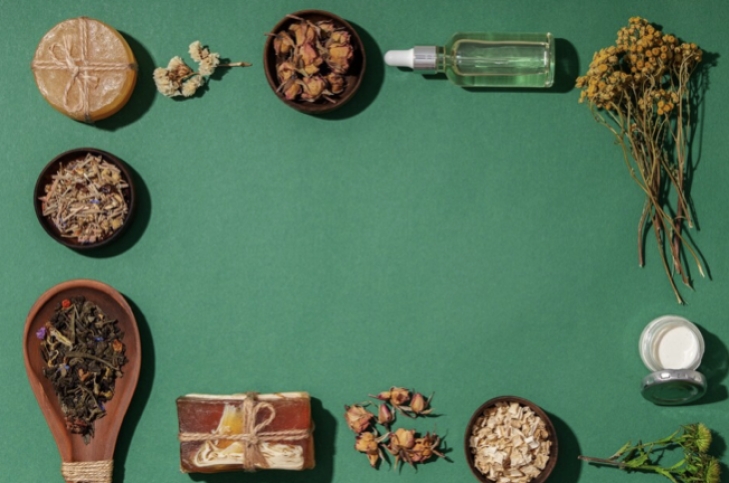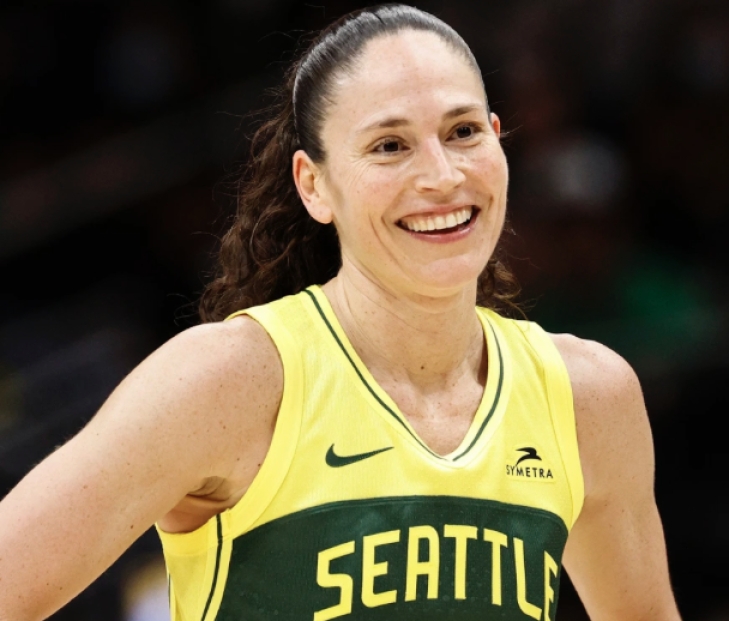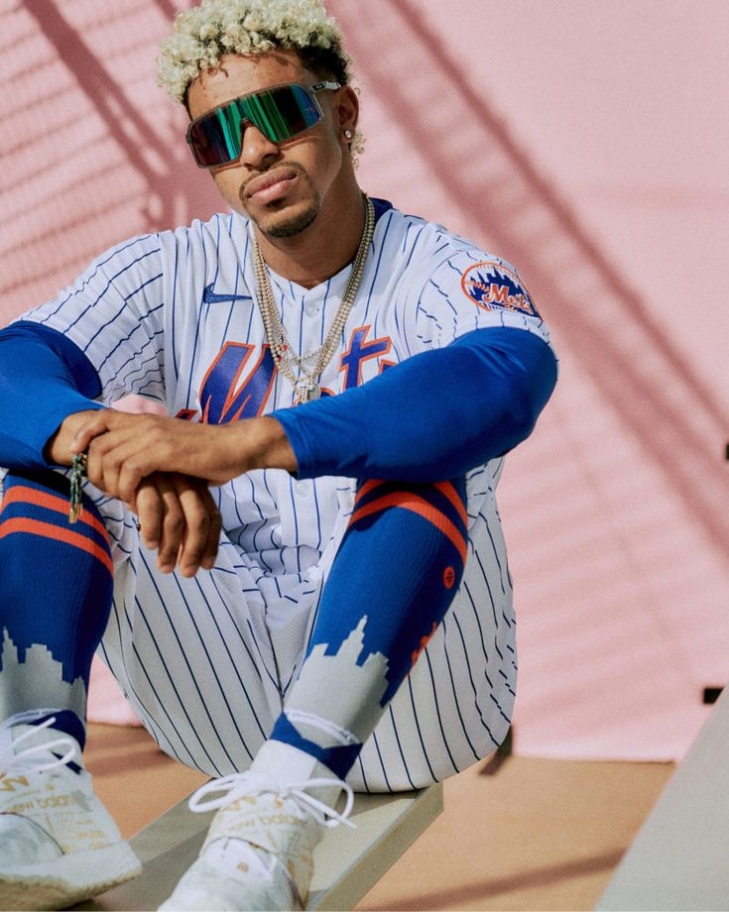
Committee Chairman
Why Are Podcasts Suddenly Hooked On Online Herbal Product Buying?
Podcasts have evolved from niche content creators to mainstream influencers, shaping trends across industries. In recent times, one intriguing shift has been the growing obsession with online herbal product buying. This sudden fascination has piqued curiosity among listeners and marketers alike, creating a unique intersection between wellness and digital commerce. What’s fueling this trend? How are podcasts seamlessly integrating conversations about herbal products into their narratives? This blog post explores the factors driving this rising interest. So, if you're a podcast enthusiast or a brand looking to tap into this trend, this comprehensive guide will break down everything.
Podcasts & Herbal Products: What’s Behind The Sudden Craze?
1. Growing interest in wellness
The growing interest in wellness has led people to explore natural and holistic products, including herbal supplements. Consumers are becoming more mindful of their health and are shifting toward plant-based alternatives. Podcasts, known for their authentic storytelling and niche content, have tapped into this wellness wave. Many listeners view podcast hosts as trusted sources, making these platforms ideal for discussing herbal products and their benefits.
This interest aligns perfectly with the podcast format, which allows for in-depth conversations and expert interviews. All in all, as more people seek credible information about herbal products online, podcasts are stepping up as a go-to source, sparking discussions.
2. Increased e-commerce accessibility
The rise of e-commerce platforms has made it easier than ever for consumers to purchase herbal products, including Kratom. One significant advantage is the convenience of shopping from anywhere at any time, eliminating the need to visit physical stores. Additionally, fast shipping options and reliable delivery services have improved the overall customer experience, allowing buyers to receive Kratom and its most popular strains, such as Red Bali, quickly and hassle-free.
This accessibility has led podcasts to promote online herbal purchases, knowing their audience prefers quick and easy solutions. So, for those interested in this popular strain and the hype, a potentially common recommendation is to get red bali kratom with fast shipping.
3. Audience preference for natural
Audiences today are increasingly inclined toward natural and organic products, including herbal supplements, teas, and remedies. This shift is driven by growing awareness about the potential side effects of synthetic products and a desire for cleaner, healthier lifestyle choices. Podcasts, known for their personal and conversational style, resonate well with this preference by sharing relatable experiences and honest product recommendations.
Hosts often discuss natural solutions for common issues, appealing to listeners seeking alternatives to conventional medicines. As online shopping makes it easy to explore and purchase herbal products, this trend naturally aligns with podcast content. This combination makes herbal product discussions a seamless fit.
4. Niche product market appeal
Niche product market appeal refers to the unique value online herbal products offer by catering to a specific audience interested in natural and plant-based alternatives. Podcasts often target niche listener groups, making them an ideal platform to promote such specialized products. Herbal brands find this appealing because they can reach an engaged audience that shares their wellness-focused values. This focused approach creates a sense of exclusivity and trust, increasing the chances of listener conversions.
Unlike mainstream products, herbal goods may benefit from tailored storytelling on podcasts, where hosts can authentically discuss their personal experiences, benefits, and usage. This alignment creates a mutually beneficial relationship, making it a compelling reason for podcasts to embrace promotions.
5. Monetization through brand partnerships
Podcasts have become a valuable platform for brands to reach engaged audiences. Herbal product companies, in particular, are increasingly forming partnerships with podcasters to promote their products. This is because many podcasts focus on health, wellness, and lifestyle topics, which naturally align with the appeal of herbal products. The working of a brand deal typically involves the brand providing a script or talking points to the podcast host, who then incorporates the promotion seamlessly into the content.
In return, the podcast earns a fee, commission, or both. These collaborations benefit both parties: brands gain direct access to a niche, loyal audience, while podcasters monetize their content through sponsored segments.
6. Authentic storytelling opportunities
Podcasts thrive on authentic storytelling that connects with their audience. When discussing herbal products, podcasters have the opportunity to share genuine experiences, personal health journeys, or relatable anecdotes about natural wellness solutions. These stories may feel more engaging and trustworthy compared to traditional advertisements.
Moreover, podcasters can seamlessly weave herbal product mentions into their narratives without sounding overly promotional. This approach not only keeps the audience interested but also helps brands gain authentic exposure.
What Goes Into Podcast Herbal Stories That Keep Listeners Hooked?
Genuine personal experiences
Podcasters often share authentic experiences with herbal products, making their stories relatable and believable. These personal narratives help listeners connect emotionally and build trust. When hosts describe how specific products may have impacted their wellness journey, it adds credibility and creates a genuine bond with the audience.
Seamless product integration
Herbal product mentions are skillfully woven into conversations without disrupting the flow of content. This subtle approach keeps listeners engaged while exposing them to the products naturally. Instead of sounding like advertisements, the product becomes part of the story, enhancing listener interest and recall.
Informative yet entertaining content
Podcasters balance education and entertainment by providing valuable information about herbal products. They share insights, potential benefits, and usage tips in a conversational tone, ensuring that listeners stay engaged while gaining knowledge about the products being mentioned.
Listener-driven narratives
Many podcasts involve their audience by sharing listener feedback, questions, and stories about herbal products. This participatory approach creates a community feel where listeners are actively engaged. When people hear relatable stories from fellow listeners, it builds curiosity and motivates them to explore similar products.
Summing Up
Podcasts have become a powerful platform for promoting online herbal products through authentic storytelling, seamless product integration, and strong brand collaborations. As e-commerce and wellness trends continue to rise, podcasts provide a natural space for meaningful conversations, creating value for listeners and brands while shaping consumer preferences in the digital age.
The Pro Football Hall of Fame Revisited Project: 1973 Final VOTE
1973 Pro Football Hall of Fame Revisited Project Class.
Here we are! Again!!
If you have been following our Pro Football Hall of Fame Revisited Project, you know we have asked the rhetorical question: What if the PFHOF began in January 1946?
After soliciting and obtaining a passionate group of football fans and historians, we sent out a ballot for a Preliminary Vote, in which we asked each voter to give us 25 names as their semi-finalists and 5 in the Senior Pool. We then asked the group to vote for their 15 Finalists in the Modern Era and 3 in the Senior Category. The final stage was to vote for their five Modern Era inductee and one Senior inductee.
This is the result of the 28th official class;
Below are the final results of this project based on 30 votes.
Remember that the group took a vote in “1970”, and we have reverted to the top five candidates entering the Hall, PROVIDING THEY MAKE 50% of the vote. This will be put to a vote again in “1976”.
This is for the “Modern Era”
*Bold indicates they have been elected to the Pro Football Hall of Fame Revisited Class of 1973:
|
Player |
Year of Eligibility |
Vote Total |
|
Raymond Berry E |
1 |
25 |
|
Lenny Moore HB-FL |
1 |
23 |
|
Jim Parker T-G |
1 |
18 |
|
Jim Ringo C |
1 |
15 |
|
Jim Taylor FB |
1 |
15 |
|
Lou Groza T-PK |
1 |
12 |
|
Mike McCormack T-G |
6 |
9 |
|
Paul Hornung HB |
1 |
9 |
|
John Henry Johnson FB-HB |
2 |
7 |
|
Pat Harder FB |
15 |
4 |
|
Alan Ameche FB |
8 |
3 |
|
Joe Fortunato LB |
2 |
3 |
|
Jimmy Patton DB |
2 |
3 |
|
Stan Jones G-DT-T |
1 |
3 |
|
Del Shofner E-DB |
1 |
0 |
This is for the “Senior Era”,
*Bold indicates they have been elected to the Pro Football Hall of Fame Revisited Class of 1973.
|
Joe Kopcha |
12 |
15 |
|
Ward Cuff |
1 |
8 |
|
Whizzer White |
7 |
4 |
|
None of the Above |
N/A |
3 |
This is for the “Coaches/Contributors”,
*Bold indicates they have been elected to the Pro Football Hall of Fame Revisited Class of 1973.
|
Vince Lombardi |
1 |
29 |
|
Buddy Parker |
4 |
1 |
|
Clark Shaughnessy |
4 |
0 |
|
None of the Above |
N/A |
0 |
About the 1973 Inductees:
Raymond Berry E, BAL 1955-67: Inducted in the Pro Football Hall of Fame Revisited Project in 1973 on his 1st Ballot. Inducted into the actual Pro Football Hall of Fame in 1973.
Raymond Berry was all about the details with every aspect of his game. An expert route runner, Berry rarely fumbled or dropped passes and was essential to the two consecutive Baltimore Colts Championships in the late 1950s. Most notably, he caught 12 passes in the 1958 Championship Game for 178 Yards and a Touchdown.
Berry would lead the NFL in receptions three times as well as receiving yards three times. He would amass 9,275 Yards and 68 Touchdowns, an incredible number for his time period.
Lenny Moore, HB-FL, BAL 1956-67. Inducted in the Pro Football Hall of Fame Revisited Project in 1973 on his 1st Ballot. Inducted into the actual Pro Football Hall of Fame in 1975.
A Baltimore Colt for all twelve seasons of his career, Halfback, Lenny Moore was a bona fide dual threat. Moore was one of the rare players who was equally adept at rushing and receiving and scored more than 100 Touchdowns. Moore would lead the National Football League in Yards/Attempt four times, Touchdowns twice, and Yards from Scrimmage once. The offensive superstar would be a five-time First Team All-Pro and was named the MVP in 1964.
Pretty good career, right?
It’s not over yet.
Moore was a major force in the Colts consecutive NFL Championships in the late 1950s and he entered the Pro Football Hall of Fame in 1975.
Jim Parker, T-G, BAL 1957-67: Inducted in the Pro Football Hall of Fame Revisited Project in 1973 on his 1st Ballot. Inducted into the actual Pro Football Hall of Fame in 1973.
Jim Parker spent his entire eleven-year career as a Baltimore Colt. The prolific Lineman was a champion in College (with Ohio State) and helped the Colts win the NFL Title in 1958 and 1959. Parker was named to both the 50th and 75th Anniversary Teams as well as eight Pro Bowls and eight First Team squads.
Jim Ringo, C, GNB 1953-63 & PHI 1964-67. Inducted in the Pro Football Hall of Fame Revisited Project in 1973 on his 1st Ballot. Inducted into the actual Pro Football Hall of Fame in 1981.
Jim Ringo played most of his Hall of Fame career with the Green Bay Packers and it was there that he started 126 of 131 games. Ringo was a seven-time Pro Bowl and six-time First Team All-Pro Selection with Green Bay, and he was a vital component of the team that won the 1960 and 1961 NFL Championship.
Allegedly, Ringo had asked for a raise after the 1963 season, and did so in a way that angered the Packers brass, who promptly traded him to Philadelphia. Regardless of that is true, Ringo was still a good player, and went to earn three more Pro Bowls as an Eagle.
Jim Taylor, FB, GNB 1958-67. Inducted in the Pro Football Hall of Fame Revisited Project in 1973 on his 1st Ballot. Inducted into the actual Pro Football Hall of Fame in 1976.
An All-American at LSU, the Packers would select Taylor in the second round of the 1958 draft. He saw limited action as a rookie but when Vince Lombardi was hired, Taylor would become a feature back. Along with Paul Hornung, the Packers would have the best pair of backs in the game. A power runner, Taylor was especially effective in short yardage situations. In 1960, Taylor would have his first of five consecutive 1,000 Yard Rushing seasons. His most productive would occur in 1963 where he would have a career high and league leading 1,474 Yards with 19 Rushing Touchdowns and he was named the AP MVP.
Under Lombardi, Taylor would assist the Packers win the 1961, 1962, 1965 and 1966 NFL Championship and he was a member of the Super Bowl I Championship Team. Individually speaking he was a five-time Pro Bowler and a First Team All Pro in 1963. Finishing his career in New Orleans for one season in 1967, he would retire with 8,597 Rushing Yards with 83 Rushing Touchdowns.
Joe Kopcha, G, CHI 1929 & 1932-35. Inducted in the Pro Football Hall of Fame Revisited Project in 1973 on his 12th Senior Ballot. Was never inducted into the actual Pro Football Hall of Fame in 1976.
Kopcha finally makes it after being on the ballot from year one. Tough as he was versatile, Kopcha was an old school cardio machine who was good in the 60th minute as he was in the first. A hidden gem on Chicago’s 1932 and 1933 NFL Championship team, Kopcha’s career was brief, but impactful. He is also known for redesigning shoulder pads, whose basic designs are still in use today.
Vince Lombardi, Head Coach, GNB 1959-67 & WAS 1969. Inducted in the Pro Football Hall of Fame Revisited Project in 1973 on his 1st Coaches/Contributors Ballot. Inducted into the actual Pro Football Hall of Fame in 1971.
With all due respect to every coach in the National Football League history, there is, and will never will be another man revered more than Vince Lombardi in that capacity.
After revamping the New York Giants offense and helping to make them one of the most potent forces in football, the Green Bay Packers, who had only won a single game in 1958, signed him to coach their team. Lombardi turned them around instantly, and the Packers won five NFL Championships and the first two Super Bowls. He finished his career with one year in Washington (1969), before ill health forced him to retire.
Lombardi had a stellar record of 96-34-6, and he remains the coaching template in not just football but in life.
The Naismith Basketball Hall of Fame announces the 2025 Finalists
Hall of Fame season continues as on the eve of NBA All-Star Weekend, the Naismith Basketball Hall of Fame has announced the Finalists for the 2025 Class.
The Hall made waves when they recently altered (again) the requirements, moving the eligibility limits to two years from three years.
This altered the landscape, as their were no surefire entrant for this year’s class.
The Finalists are:
2008 United States Olympic Team (TEA). Coached by Mike Krzyzewski (with Jim Boeheim, Nate McMillan, and Mike D’Antoni), the United States beat Spain in the finals. The roster included Carlos Boozer, Jason Kidd, LeBron James, Deron Williams, Michael Redd, Dwayne Wade, Kobe Bryant, Dwight Howard, Chris Bosh, Chris Paul, Tayshaun Prince, and Carmelo Anthony.
Dusan Ivkovic (PLA). A FIBA Hall of Fame inductee, Ivkovic played ten seasons for Radnicki Belgrade in the Yugoslavian League. Although the Point Guard had a nice career and was nominated as a player, he had far more success as a coach at the club level and for Yugoslavia and Serbia, winning three EuroBasket Gold Medals and a FIBA World Gold Medal in 1990. Why wasn’t he nominated as a Coach?
Danny Crawford (REF). Crawford was an NBA Referee from 1984 to 2017 and worked 23 straight NBA Finals.
Marques Johnson (PLA). Johnson helped UCLA win the National Championship in 1975 and two years later, he was the National College Player of the Year. He was a six-time All-Star (five with Milwaukee and one with the Los Angeles Clippers) with three All-NBAs (one First Team and two Second Teams) and had nearly 14,000 career Points. Johnson is enshrined in the College Basketball Hall of Fame.
Molly Bolin (PLA). Bolin was one of the biggest stars of the Women’s Professional Basketball League in the late 70s, the first pro basketball league for women. She was a three-time league All-Star and was the Co-MVP in 1980.
Buck Williams (PLA). Williams won the 1982 Rookie of the Year Award and was a three-time All-Star in his time with the New Jersey Nets. He also player for Portland and New York and was a four-time All-Defensive Selection (two First Team and two Second Team) and had 16,784 career Points and 13,017 Rebounds.
Jennifer Azzi (PLA). Azzi was the Naismith Basketball Player of the Year in 1990, leading Stanford to a National Championship. She was also on the gold medal-winning 1996 Olympic Women’s Team and won two more gold medals at the FIBA World Championship (1990 & 1998). She was also inducted into the Women’s Basketball Hall of Fame and was a Naismith Basketball Finalist in 2023.
Mark Few (COA). Few are arguably the most important men in Gonzaga's history; as of this writing, he is still their head coach. He took the Bulldogs to two Final Fours (2017 & 2021) and won 19 WCC Tournaments. He is also a two-time Naismith Coach of the Year and 12-time WCC Coach of the Year.
Sue Bird (PLA). Bird is one of the best women’s players of all time, boasting the best resume among all candidates regardless of category. A former Naismith College Player of the Year at UConn and two-time NCAA Champion, Bird played her entire WNBA career with Seattle where she won four WNBA Titles, was a 13-time All-Star, five-time All-WNBA First Team selection, and for the United States won five Gold Medals (2004, 2008, 2012, 2016 & 2020) and four World Championships (2002, 2010, 2014 & 2018).
Maya Moore (PLA). After a solid career at UConn, Moore had an incredible pro career with the Minnesota Lynx, where she won four WNBA Titles, was the 2014 WNBA MVP, and was a six-time WNBA All-Star. As a one-time WNBA Scoring and Steals Champion, Moore also won two Olympic Gold medals and two World Championship Gold Medals.
Tal Brody. Brody played collegiately at Illinois, but after he competed at Maccabiah Games in Israel, he was asked to stay, which led to a successful career where he put Maccabi Tel Aviv and Israeli basketball on the map, which was the tagline he is known for.
Jerry Welsh (COA). Welsh was the Head Coach at SUNY Potsdam, where he had a record of 494-141 from 1968 to 1991 and won two National Championships in 1981 and 1986.
Billy Donovan (COA). Currently the Head Coach of the Chicago Bulls, Donovan’s Hall of Fame path lies in the University of Florida, where he took the Gators to four SEC Tournament Championships, four Final Fours, and two NCAA Championships (2006 & 2007). The three-time SEC Coach of the Year also had stints as the Marshall Head Coach and Oklahoma City Thunder HC.
Dwight Howard (PLA). Howard was a three-time Defensive Player of the Year, an eight-time All-Star, and a five-time First Team All-Star, most of which were accolades from his early years in Orlando. He played for the Lakers thrice, winning his only title there in 2020. Howard also played for Houston, Atlanta, Charlotte, Washington, and Philadelphia, boasting five Rebounds Titles, two Blocks Titles, and an Olympic Gold Medal in 2008.
Micky Arison: Arison bought the Miami Heat in 1995, and under his ownership, the Heat won three NBA Championships (2006, 2012 & 2013).
Sylvia Fowles (PLA). One of the finest defensive players in WNBA history, Fowles split her professional North American career with the Chicago Sky and Minnesota Lynx, the latter of which she won two WNBA Championships and Finals MVPs (2015 & 2017). A WNBA MVP in 2017, Fowles won four Defensive Player of the Year Awards, an eight-time All-Star, and a three-time First Team All-WNBA Selection. Internationally, she won four Gold Medals (2008, 2012, 2016 & 2020) and a World Championship (2010).
Carmelo Anthony (PLA). A member of the NBA 75th Anniversary Team, Anthony led Syracuse to a National Championship in 2003 and would become a ten-time All-Star and a six-time All-NBA player (two Second Team and three Third Team). Melo is also a former NBA scoring champion who compiled 28,289 career Points and internationally is a three-time Olympic Gold Medal winner (2008, 2012 & 2016). He played for Denver, New York, Oklahoma City, Houston, Portland, and the Los Angeles Lakers.
The Hall also announced that Adrian Wojnarowski won the 2025 Curt Gowdy Insight Award, George Blaha and Clark Kellogg won the 2025 Curt Gowdy Electronic Award, Michelle Smith won the 2025 Curt Gowdy Print Media Award and Jeff Twiss won the 2o25 John Bunn Lifetime Achievement Award.
24. Francisco Lindor
The New York Mets traded for Francisco Lindor before the 2021 season, and the Mets thought that had the infielder that they could build a contender around. That might be the case in 2025, but in 2021, it looked like a colossal mistake.
Lindor, who signed a ten-year, $341 million extension, started off slow and was even booed by the Mets faithful. He rebounded, finishing with 20 Home Runs, but the slow start had New York fans thinking it was another case of a large contract gone bad. Since that time, Lindor had returned to MVP form.
Lindor’s bat improved in 2022, smacking 26 Home Runs with 107 RBI, and he moved the HR numbers back over 30 in 2023 with 31. Finishing 9th in MVP voting in both 2022 and 2023, Lindor exploded last year as the runner-up to the National League MVP (33 HR, 169 G, 29 SB, .844 OPS) and piloted New York to the NLCS.
Lindor is now over 30, and enters 2025 on the most loaded Mets team of his career. He also has an outstanding three-year All-MLB Team 2 streak.
A World Series with Lindor leading the way will justify that big money.





